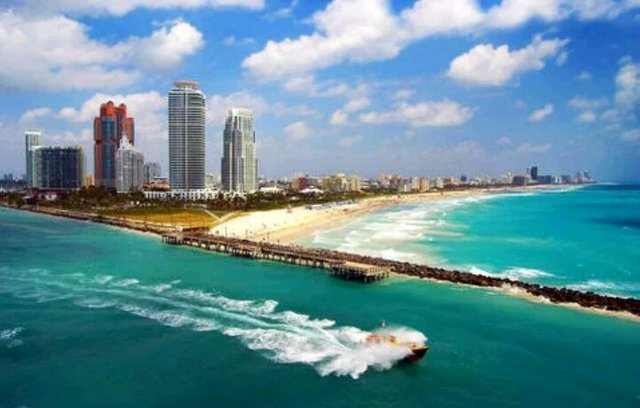How America made it to top most respectful country of the world
 The history of the United States began with the settlement of Indigenous people before 15,000 BC. Numerous cultures formed. The
The history of the United States began with the settlement of Indigenous people before 15,000 BC. Numerous cultures formed. The
arrival of Christopher Columbus in 1492 started the European colonization of the Americas . Most colonies formed after 1600. By the 1770s, thirteen British colonies contained 2.5 million people along the Atlantic coast east of the Appalachian Mountains . After defeating France, the British government imposed a series of new taxes after 1765, rejecting the colonists' argument that new taxes needed their approval (see Stamp Act 1765 ). Tax resistance, especially the Boston Tea Party (1773), led to punitive laws by Parliament designed to end self-government in Massachusetts.
Armed conflict began in 1775. In 1776, the
Second Continental Congress declared a new, independent nation: the United States of America . Led by General George Washington , it won the Revolutionary War with large support from France. The peace treaty of 1783 gave the new nation the land east of the Mississippi River (except Canada and Florida ). The Articles of Confederation established a central government, but it was ineffectual at providing stability, as it could not collect taxes and had no executive officer. A convention in 1787 wrote a new Constitution that was adopted in 1789. In 1791, a Bill of Rights was added to guarantee inalienable rights . With Washington as the first president and Alexander Hamilton his chief adviser, a strong central government was created. Purchase of the Louisiana Territory from France in 1803 doubled the size of the United States. A second and final war with Britain was fought in 1812 , which solidified national pride.
Encouraged by the notion of manifest destiny , U.S. territory expanded all the way to the
Pacific coast . While the United States was large in terms of area, its population in 1790 was only 4 million. However this grew rapidly, reaching 7.2 million in 1810, 32 million in 1860, 76 million in 1900, 132 million in 1940, and 321 million in 2015. Economic growth in terms of overall GDP was even greater. However compared to European powers, the nation's military strength was relatively limited in peacetime before 1940. The expansion was driven by a quest for inexpensive land for
yeoman farmers and slave owners. The expansion of slavery was increasingly controversial and fueled political and constitutional battles, which were resolved by compromises. Slavery was abolished in all states north of the Mason–Dixon line by 1804, but the South continued to profit off of the institution, mostly from production of cotton.
Republican Abraham Lincoln was elected in 1860 on a platform of halting the expansion of slavery.
Seven Southern slave states rebelled and created the foundation of the Confederacy . Its
attack of Fort Sumter against the Union forces started the Civil War (1861–1865). Confederate defeat led to the impoverishment of the South and the abolition of slavery. In the
Reconstruction Era (1863–1877), legal and voting rights were extended to freed slaves . The national government emerged much stronger, and because of the Fourteenth Amendment in 1868, it gained the explicit duty to protect individual rights. However, when white Democrats regained their power in the South in 1877, often by paramilitary suppression of voting, they passed Jim Crow laws to maintain white supremacy, and new
disfranchising constitutions that prevented most African Americans and many poor whites from voting. This continued until gains of the
Civil Rights Movement in the 1960s and passage of federal legislation to enforce constitutional rights were made.
The United States became the world's leading industrial power at the turn of the 20th century due to an outburst of entrepreneurship in the
Northeast and Midwest and the arrival of
millions of immigrant workers and farmers from Europe. The national railroad network was completed and large-scale mining and factories industrialized the Northeast and Midwest. Mass dissatisfaction with corruption, inefficiency and traditional politics stimulated the Progressive movement , from the 1890s to 1920s, which led to many reforms including the 16th to 19th constitutional amendments, which brought the federal income tax, direct election of Senators, prohibition , and women's suffrage . Initially neutral during World War I , the United States declared war on Germany in 1917 and funded the Allied victory the following year. Women obtained the right to vote in 1920, with Native Americans obtaining citizenship and the right to vote in 1924.
After a prosperous decade in the 1920s, the
Wall Street Crash of 1929 marked the onset of the decade-long worldwide Great Depression . Democratic President Franklin D. Roosevelt ended the Republican dominance of the White House and implemented his New Deal programs, which included relief for the unemployed, support for farmers, Social Security and a minimum wage . The New Deal defined modern American liberalism . After the
Japanese attack on Pearl Harbor in 1941, the United States entered World War II and financed the Allied war effort and helped defeat Nazi Germany in the European theater . Its involvement culminated in using newly invented nuclear weapons on two Japanese cities to defeat Imperial Japan in the Pacific theater .
The United States and the Soviet Union emerged as rival superpowers in the aftermath of World War II. During the Cold War , the two countries confronted each other indirectly in the arms race , the Space Race, proxy wars , and propaganda campaigns. The purpose of this was to stop the spread of communism. In the 1960s, in large part due to the strength of the Civil Rights Movement, another wave of social reforms was enacted by enforcing the constitutional rights of voting and freedom of movement to African-Americans and other racial minorities. The Cold War ended when the Soviet Union was officially dissolved in 1991, leaving the United States as the world's only superpower.
After the Cold War, the United States began focusing on modern conflicts in the Middle East and nuclear programs in North Korea. The beginning of the 21st century saw the
September 11 attacks by Al-Qaeda in 2001, followed by wars in Iraq and Afghanistan . In 2008, the United States had its worst economic crisis since the Great Depression , which was followed by slower-than-usual rates of economic growth during the 2010s.
Please upvote: https://steemit.com/free/@bible.com/4qcr2i
Please upvote: https://steemit.com/free/@bible.com/4qcr2iPlease upvote: https://steemit.com/free/@bible.com/4qcr2i
✅ @olawale100001, I gave you an upvote on your post! Please give me a follow and I will give you a follow in return and possible future votes!
Thank you in advance!